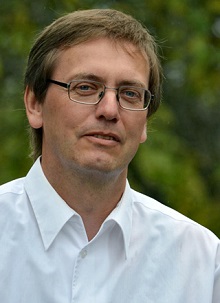

EC-Earth, a European consortium which aims to provide reliable climate information, will use ECMWF’s OpenIFS for the atmosphere–land component in future versions of its Earth system model.
Dr Ralf Döscher, the chair of the EC-Earth steering committee, confirmed the development during a meeting of the consortium hosted by ECMWF on 2 and 3 November.
“For the atmosphere–land component of our Earth system model, we will use the next version of OpenIFS which ECMWF decides to release,” he said.
EC-Earth is currently using an older version of ECMWF’s Integrated Forecasting System (IFS) to help produce climate projections which may feed into future reports by the Intergovernmental Panel on Climate Change (IPCC).
The OpenIFS programme provides a supported version of the IFS under licence to national meteorological and hydrological services, research institutes and universities.
“We are delighted that EC-Earth has decided to use OpenIFS as part of its future Earth system model,” OpenIFS project manager Dr Glenn Carver said.
Long-standing cooperation
The decision to use OpenIFS builds on long-standing cooperation between EC-Earth and ECMWF.
“The basic idea behind EC-Earth was to use ECMWF’s highly successful weather forecasting model as a climate model,” Dr Döscher points out.
“That is why we are already using a suitably modified version of ECMWF’s Seasonal Forecast System 4 for the atmosphere–land component of our Earth system model,” he explains.
However, System 4 uses an IFS model cycle which dates back several years. Switching to OpenIFS will provide an opportunity to use a supported and more up-to-date version.
 |
“Some of our partners are already working with the current version of OpenIFS to see how it can be integrated into our Earth system model by coupling it to some of its components.” (Ralf Döscher) |
Dr Döscher, the Science Coordinator at the Swedish Meteorological and Hydrological Institute’s climate modelling research unit (the Rossby Centre), adds that the consortium’s links with ECMWF may well be strengthened further.
“Discussions are under way on updating the atmospheric chemistry component of our Earth system model with ECMWF’s Composition-IFS (C-IFS),” he says.
Both parties stand to benefit from the cooperation. “EC-Earth’s experience with the IFS is expected to give ECMWF new insights into its forecasting systems given the different timescale EC-Earth focuses on and its large science community,” says Dr Souhail Boussetta, the ECMWF liaison scientist with EC-Earth.
Ambitious plans
EC-Earth, which brings together 29 partner institutes in 13 European countries, has ambitious plans for its Earth system model: it intends to use it to produce climate projections which will feed into future reports by the IPCC.
The framework in which EC-Earth is doing this is the Coupled Model Intercomparison Project Phase 6 (CMIP6), run by the World Climate Research Programme.
Much of the meeting at ECMWF was devoted to moving all elements into place so that the 2020 deadline for CMIP6 submissions can be met.
“The main thing that still needs to be done is to finalise several coupled configurations of the model: we need to evaluate the output to make sure it matches observations,” Dr Döscher explains.

The maximum configuration in which EC-Earth’s Earth system model is expected to run comprises seven components, which are all coupled to each other.
For its submissions to CMIP6, EC-Earth will still use ECMWF’s System 4 for the atmosphere–surface component.
But, as Dr Döscher points out, work on the transition to OpenIFS has already begun: “Some of our partners are already working with the current version of OpenIFS to see how it can be integrated into our Earth system model by coupling it to some of its components.”
Top photo: plenary session at the EC-Earth meeting hosted by ECMWF on 2 and 3 November.
